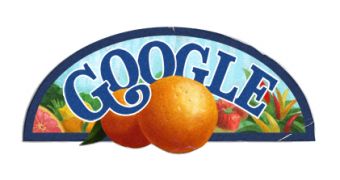Google is back with yet another colorful doodle. Today's fruity logo celebrates the 118th birthday of Albert Szent-Györgyi and his discovery of Vitamin C. The Hungarian scientist went on to win the Nobel prize for his discovery.
Vitamin C, also known as L-ascorbic acid or L-ascorbate, is a crucial nutrient for many species of animals, including humans. Vitamin C deficiency, from lack of fresh fruit or vegetables for prolonged periods leads to scurvy, a disease that has killed many sailors in historic times.
While the role of fresh fruit in preventing the disease had been known for several centuries, the actual chemical component that was needed by the body was not discovered until the 20th century.
For the discovery of Vitamin C, which he named ascorbic acid, hinting to its role in preventing scurvy, scorbutus by its Latin name, Albert Szent-Györgyi received a Nobel prize in 1937.
The Nobel Prize in Physiology or Medicine was awarded "for his discoveries in connection with the biological combustion process with special reference to vitamin C and the catalysis of fumaric acid."
Szent-Györgyi was born in Budapest, in what is today Hungary, to a well-to-do family with a background in sciences and arts. He became interested in biology when he started working and experimenting in his uncle's anatomy lab, prior to World War I.
After the war, he began an academic career, focusing on research in cellular biology. He started the work that would lead to the discovery of Vitamin C in 1927 at Cambridge, where he received a PhD for trying to isolate what he dubbed "hexuronic acid," an organic acid.
Several scientists at the time were trying to determine the anti-scorbutic factor. Through several experiments, he was able to prove that hexuronic acid was in fact the anti-scorbutic factor and was given the name ascorbic acid as a result.

 14 DAY TRIAL //
14 DAY TRIAL //